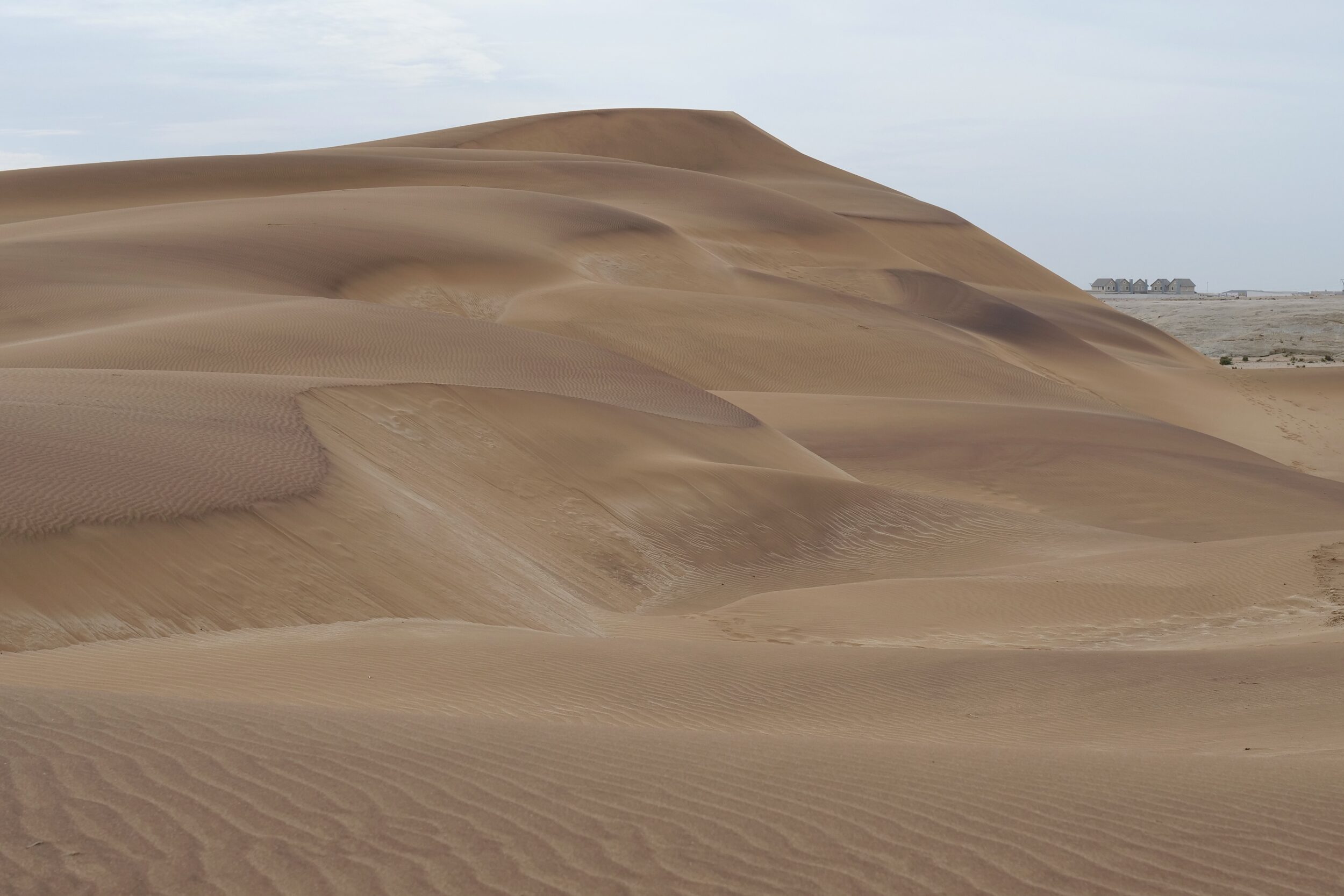Circa 75,000 members of our own species live in Swakopmund, and a great many more visit, as tourists.
Below, you are looking at its beachfront, as viewed from a hotel window at 7. 20 am on 20 November 2022.
Namibia’s third largest city – and its one “seaside resort” – is sandwiched between the chilly, easternmost waters of the Atlantic Ocean and the westernmost dunes of the Namib Desert’s “sand sea”, whence I took the featured image at 5. 11 pm on the previous day.
Comments closed








